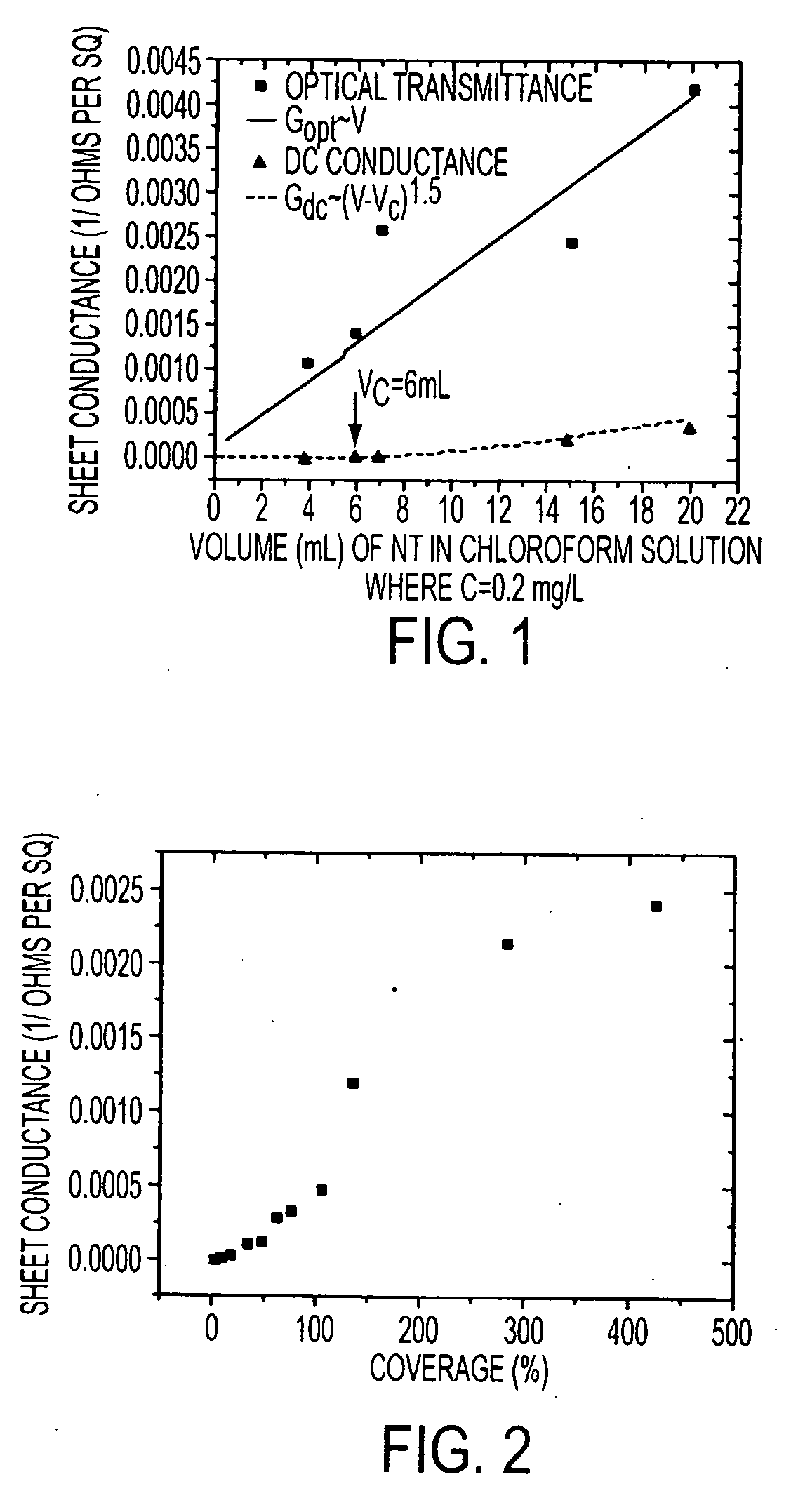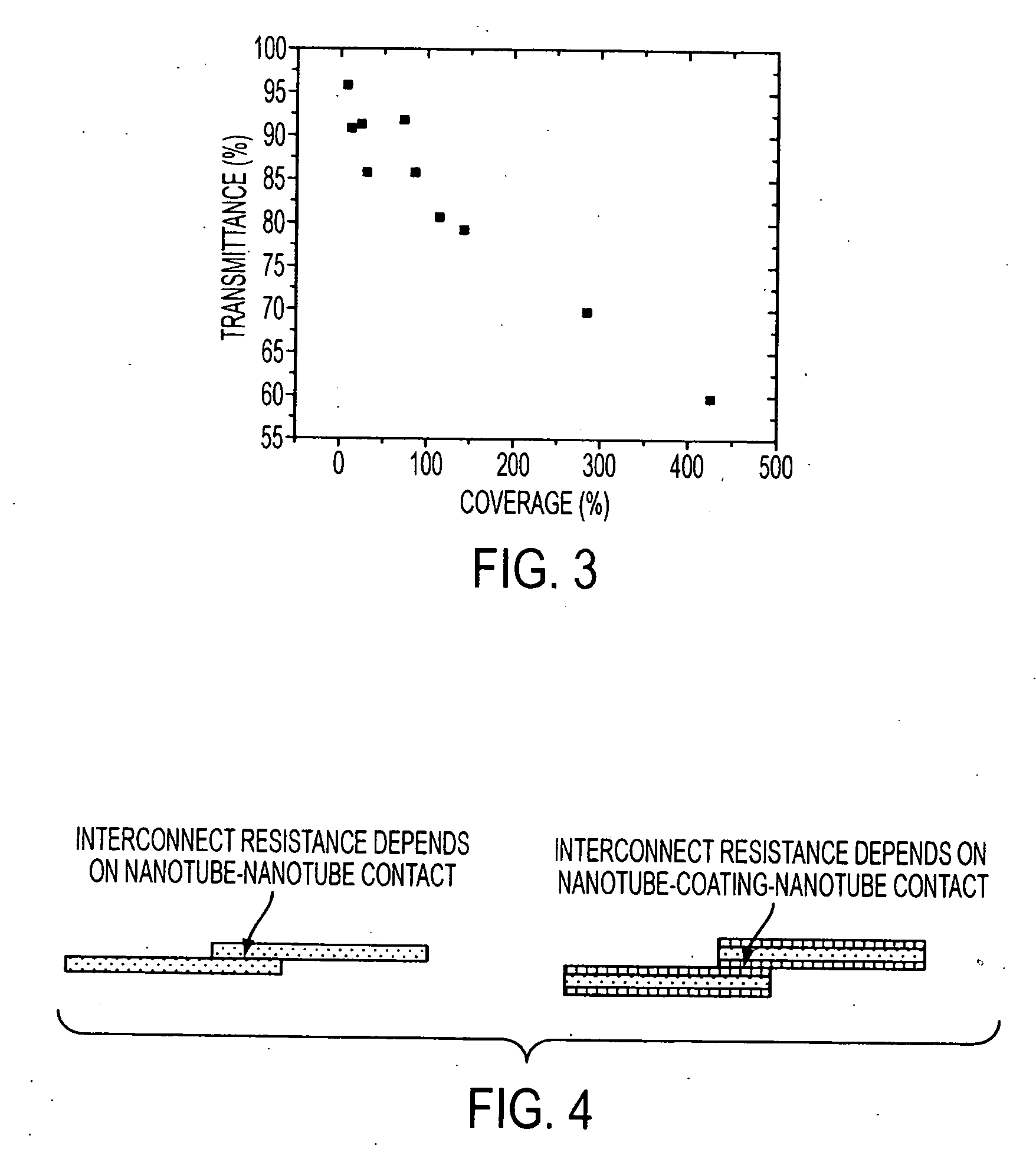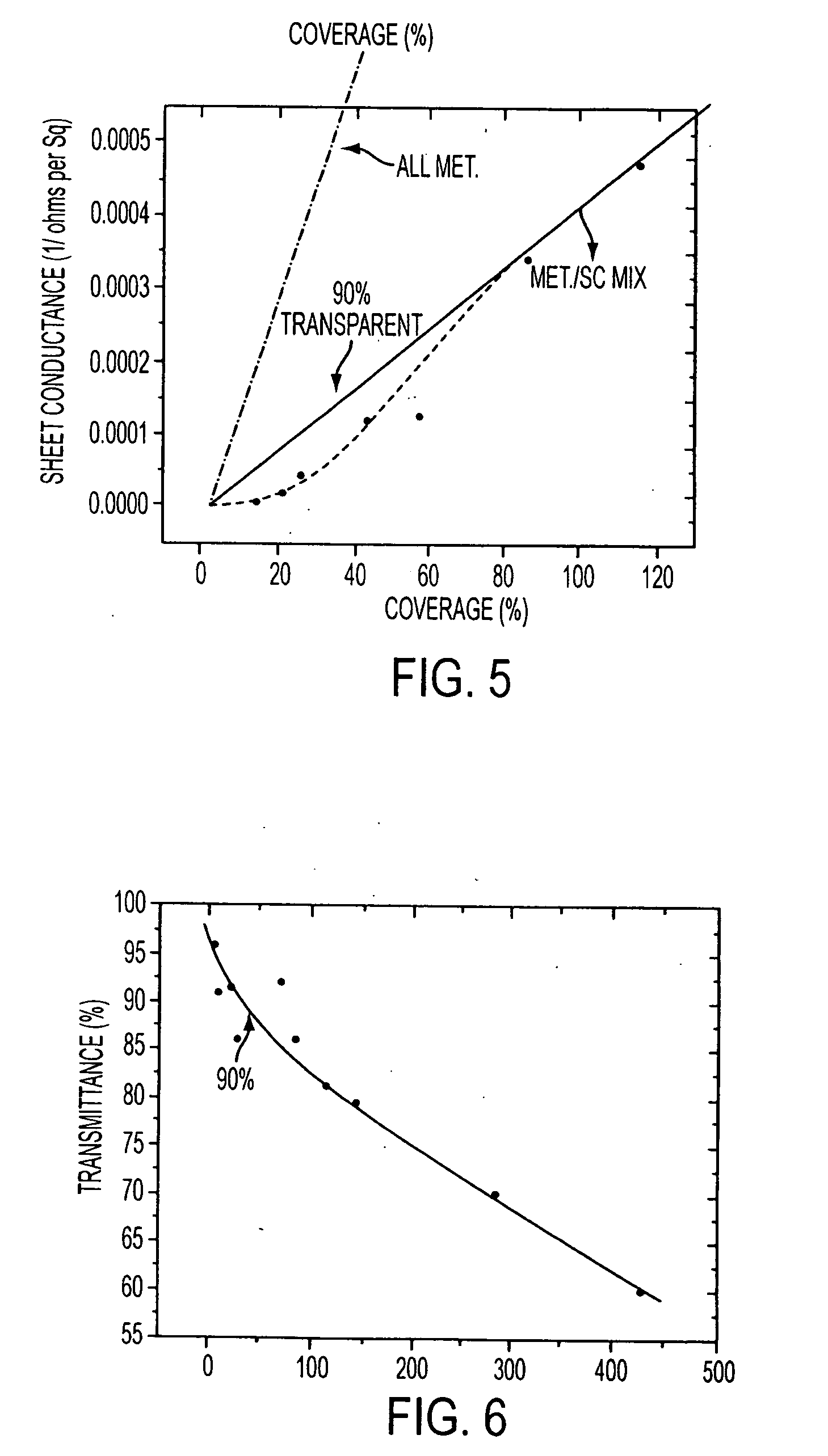Fabric having nanostructured thin-film networks
a thin-film network and nanostructure technology, applied in the direction of cell components, sustainable manufacturing/processing, instruments, etc., can solve the problems of poor contact between the swnts on separate threads within the fabric, uneven surface roughness of the film, and limited value, etc., to achieve the effect of enhancing electrical conductivity
- Summary
- Abstract
- Description
- Claims
- Application Information
AI Technical Summary
Benefits of technology
Problems solved by technology
Method used
Image
Examples
example 1
[0162] Functionalize the nanotubes in solution, deposit subsequently To test the effects of chemical doping on the sheet resistance of the nanotube networks, first several nanotube network samples were prepared by sonicating HpCO tubes in Chloroform and depositing them on an alumina filter membrane. Two different samples, with the following characteristics were prepared:
[0163] Sample 1: 40 ml of 1 mg / L NT in Chloroform
[0164] Sample 2: 40 ml of 1 mg / L NT in Chloroform with 30 mg of NTFB added in solution (Chemical formula is NO2BF4, NO2 groups hole-dope the nanotubes)
[0165] Subsequently, silver epoxy was painted on to form two straight contact leads and the result was measured as:
[0166] Sample 1: 225.7 Ohms with a 32 mm×7 mm channel, thus the sheet resistance is 1031 Ohms / Sq
[0167] Sample 2: 123 Ohms with a 32 mm×7 mm channel, 562 Ohms / Sq sheet resistance
[0168] The only difference was the addition in one solution of the NTFB before deposition, thus, upon treatment with NO2BF4, t...
example 2
[0169] Deposit Nanotubes onto a Surface, Functionalize Subsequently
[0170] Another approach was to first lay down nanotubes on a substrate from chloroform, paint on the contacts, measure the sheet resistance, followed by filtering through a solution of NTFB in water on top of that, or to soak the sample in a solution of NTFB in water.
[0171] Sample 1: made a sample of HPCo NT on alumina and measured
[0172] a sheet resistance of 726 Ohms / Sq
[0173] Sample 2: Took above sample 1 and sucked through a mixture of NTFB in water, 100 ml of water with 30 mg NTFB. After drying in oven and letting cool (overnight), the new sheet resistance was measured to be 384 Ohms / Sq, again a decrease of approximately a factor of 2.
example 3
[0174] Device with spincoated composite deposited from nanotube—SDS solution on Si / SiO2 (500 nm) die and attached wires to source / drain (20 μm separation).
Backgating
[0175]FIG. 7 shows the dependence of the source-drain current on the back-gate of a transistor device with spin-coated nanotube network.
[0176] The device has high ON / OFF ratio, which is at least several hundreds. Due to low signal, the inventor couldn't measure it more accurately even with all noise removal tools he had. The Isd(Vsd) characteristic is linear if Vsd is within 200 mV at Vg=0V. No saturation at Vsd from −10V to +10V was seen.
[0177]FIG. 8 shows the dependence of the source-drain current on the source-drain voltage of a transistor with a nanotube network conducting channel.
PUM
| Property | Measurement | Unit |
|---|---|---|
| conductivity | aaaaa | aaaaa |
| transmittance | aaaaa | aaaaa |
| electrical conductivity | aaaaa | aaaaa |
Abstract
Description
Claims
Application Information
 Login to View More
Login to View More - R&D
- Intellectual Property
- Life Sciences
- Materials
- Tech Scout
- Unparalleled Data Quality
- Higher Quality Content
- 60% Fewer Hallucinations
Browse by: Latest US Patents, China's latest patents, Technical Efficacy Thesaurus, Application Domain, Technology Topic, Popular Technical Reports.
© 2025 PatSnap. All rights reserved.Legal|Privacy policy|Modern Slavery Act Transparency Statement|Sitemap|About US| Contact US: help@patsnap.com



